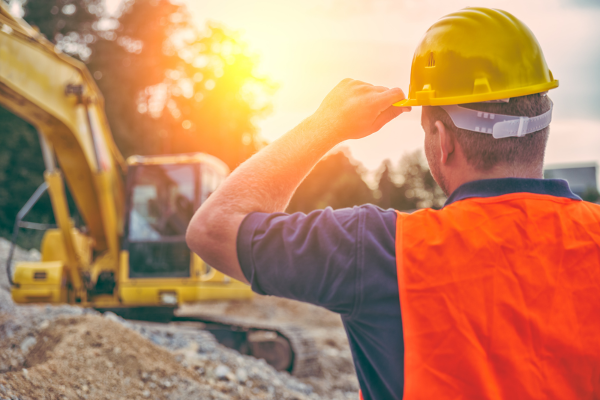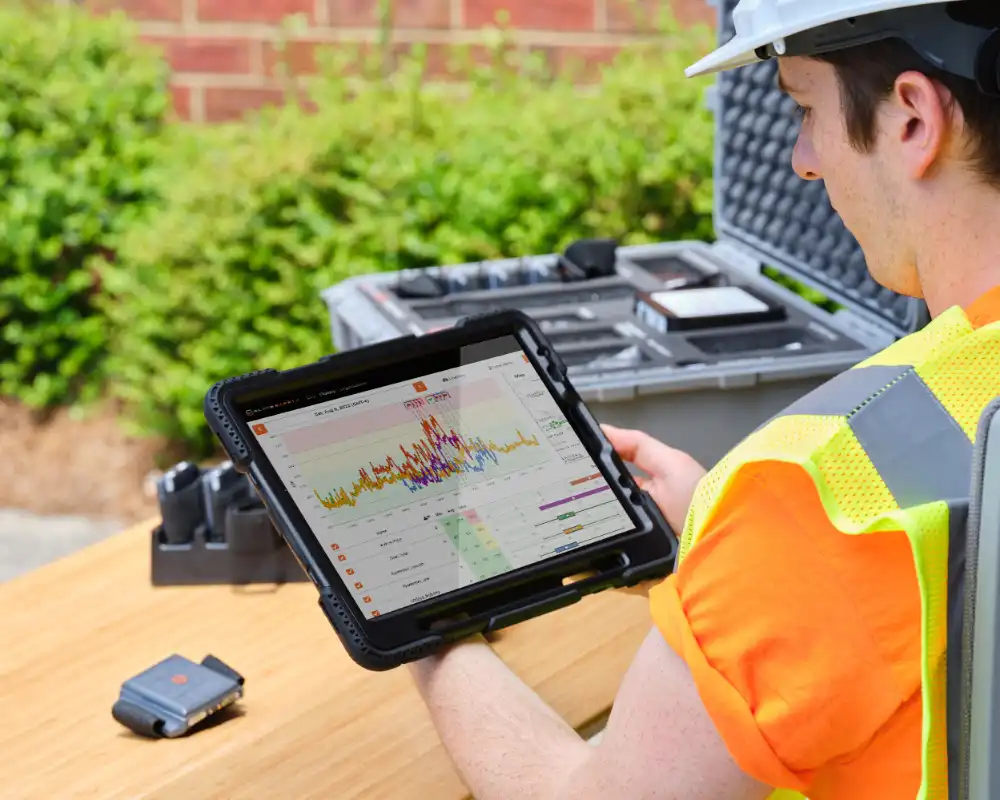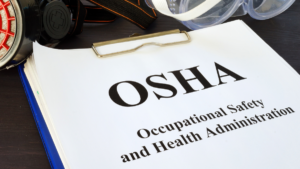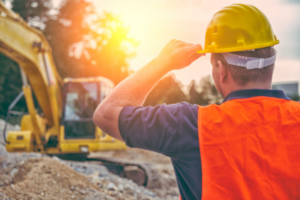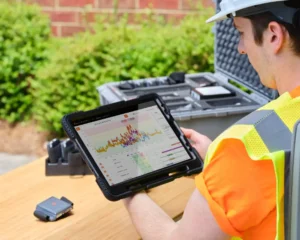- All
- Case Study
- News
- Technology
- Validation Study
- Workplace Safety
- All
- Case Study
- News
- Technology
- Validation Study
- Workplace Safety
Staying Ahead of OSHA’s Heat Injury Rule: How Real-Time Monitoring Protects Workers
OSHA’s upcoming Heat Injury and Illness Prevention rule is set to establish clearer expectations for employers in outdoor and indoor work environments. Heat-related illnesses remain a leading cause of preventable injury, and the new regulations aim to ensure organizations actively protect their employees. This new rule expands on the National Emphasis Program (NEP), an initiative to help prevent heat-related illnesses in both indoor and outdoor workplaces through increased inspection and outreach. The NEP targets over 70 high-risk industries across the United States, where Bureau of Labor Statistics data shows higher-than-average incidence rates of heat-related illness. Examples of these industries are Manufacturing, Construction, Natural Resources, and Mining. Heat stress monitoring has become increasingly critical as workplace safety regulations evolve. OSHA states the reason for increasing heat standards is: SlateSafety’s BAND V2 wearable device provides real-time physiological monitoring while the BEACON V2 environmental monitoring device measures ambient temperature related directly to the standards such as air temperature, estimated wet bulb globe thermometer, heat index and humidex. Overall, SlateSafety’s devices offer comprehensive solutions for compliance with emerging heat stress standards coupled with proactive worker protection. Why OSHA is taking action Heat stress develops quickly, and its effects range from fatigue and dizziness to …
The Hidden Costs of Heat Stress in the Workplace
Guest post by Safety Knights Heat stress isn’t just a seasonal problem; it’s a real danger at work that can hurt worker safety, productivity, and company profits. Most employers know that heat-related illnesses like heat exhaustion and heat stroke can be dangerous right away, but many don’t realize the long-term costs they can have on their business. Heat stress has a lot of effects, from lower productivity to more workers’ compensation claims. In this article, we’ll talk about the real costs of heat stress at work and why using modern technology to prevent it is not only good for your health but also good for your business. Lost Productivity: The Silent Drain on Operations When the temperature goes up, workers get less done. ScienceDirect says that productivity drops by about 2.6% for every degree Celsius (75°F) above 24°C (75°F) in places where people have to work hard. It might not seem like much, but the costs add up quickly when you look at whole workforces, like construction crews, factory lines, and utility teams. For businesses that need to meet tight deadlines and produce a lot of work, even a small drop in productivity per worker can lead to missed deadlines, …
When Fatigue Sneaks In: Spot the Signs Before It’s Too Late
What Is Cumulative Fatigue and Why Is It Dangerous? Cumulative fatigue is a physiological condition that develops when the body doesn’t recover fully between periods of demanding work. It builds over days or weeks, especially during heatwaves or multi-shift projects without sufficient rest. Unlike ordinary tiredness, cumulative fatigue leads to real safety risks. NIOSH studies confirm that extended work hours and heat exposure reduce alertness, delay reaction times, and increase error rates, especially in fast-paced or hazardous environments. For example, a crew member on day five of a shutdown might report feeling “fine” during a check-in. But physiological monitors could already be showing elevated heart rate, slow recovery, and rising strain, long before any symptoms appear. That’s why catching fatigue early matters. Here’s what to watch for before a worker realizes something’s wrong. How Can You Recognize the Early Signs of Fatigue? You can recognize early signs of fatigue by tracking shifts in physiology and behavior, not by waiting for workers to speak up. Fatigue often goes unreported, so the most reliable signs are measurable. Common physiological and behavioral markers: But even when the signs are there, most workers won’t speak up. Here’s why you can’t count on self-reporting alone. …
How to Reset Hydration Habits That Are Falling Apart
You remind your crew to drink water, over and over, but the same symptoms keep showing up. Headaches. Muscle cramps. Dizziness. Bottles stay full. Breaks get skipped. This isn’t carelessness. It’s hydration fatigue, when workers start tuning out reminders and push past the warning signs. This guide shares practical ways to reset hydration habits, support smarter fluid intake, and use real-time monitoring to spot dehydration before it affects safety or performance. Simple Ways to Improve Crew Hydration OSHA recommends that workers drink about 8 ounces of cool water every 15 to 20 minutes during hot or high-exertion tasks. That adds up to 24 to 32 ounces per hour, far more than most people actually consume. According to the CDC, U.S. adults drink an average of just 44 ounces of plain water per day. Bridging that gap doesn’t require a full-scale overhaul. Consistency is what counts. Small, repeatable changes can shift how crews approach hydration and help build better habits that last. Knowing what workers should be doing is one thing; knowing what’s actually happening in the moment is something else entirely. Real-Time Monitoring: Spotting Trouble Before It Escalates It’s not always easy to know who’s getting enough fluids. Thirst isn’t …
Industries at Highest Risk for Heat Stress (and How to Protect Workers)
Heat stress is one of the most dangerous things that can happen at work, especially as temperatures rise around the world and extreme weather events happen more often. Everyone who works in high heat is at risk, but some industries are at higher risk because the jobs are physically demanding, workers are exposed to heat for long periods of time, and they don’t have easy access to cooling measures. In this blog, we’ll look at the industries that are most likely to cause heat stress and talk about ways to keep workers safe. We’ll also show how wearable technology can help with monitoring and prevention in real time. Why Some Industries Face Higher Heat Risks Some jobs are more likely than others to expose you to heat. Workers who do hard work outside in the sun, in hot indoor spaces, or near equipment that makes heat are much more at risk. The Workers Compensation Research Institute (WCRI) says that some of the industries with the highest rates of heat-related injuries are public safety, construction, mining, and agriculture. These rates range from 310 to over 1,000 incidents per 100,000 workers. Studies also show that the risk of heat-related illness (HRI) goes …
Hot Weather, Cool Crew: How to Keep Morale High as a Leader
Guest post by Safety Knights There is no shade and it is 95 degrees outside. Shirts soaked with sweat stick to backs, hard hats feel like little ovens, and everyone’s patience is running out faster than the ice in the cooler. Does this sound familiar? When the weather gets hot, keeping your team safe at work means more than just preventing heat-related illness. It also means keeping their spirits up and their minds clear. Research from the National Institute for Occupational Safety and Health (NIOSH) shows that heat stress affects not only physical health but also cognitive function, decision-making, and overall job satisfaction. Smart leaders know that keeping morale high during hot weather isn’t just being nice—it’s a safety imperative. Workers are more likely to follow safety rules, look out for one another, and stay focused on avoiding accidents when they feel supported and valued. OSHA guidelines for heat stress emphasize that maintaining a positive work environment helps workers manage heat hazards more effectively.Below are seven practical leadership strategies to keep your crew cool, comfortable, and motivated when temperatures rise. 1. Be Realistic About Outdoor Conditions We need to move away from accepting triple-digit temperatures as just another part of …
How Safety Data Latency Puts Workers at Risk (And What to Do About It)
In high-heat environments, slow data leads to slow decisions, and that puts workers at serious risk. Heat stress builds quietly. Without real-time updates on workers’ conditions, supervisors are left guessing when to pull crews, rotate shifts, or respond to warning signs. This article breaks down how delayed safety data limits decision-making when it matters most and why real-time monitoring and instant alerts are now essential tools for protecting your workforce. Why Safety Data Latency Endangers Workers Heat stress doesn’t strike all at once. It builds gradually as body temperature rises and heart rate climbs. Workers often miss the early warning signs, like dizziness, nausea, or fatigue, which can feel easy to ignore until it’s too late. By the time supervisors spot visible symptoms, serious harm may already be underway. The problem is clear: many companies rely on manual check-ins and visual observations to monitor worker health. Without real-time data, supervisors are forced to react after a problem appears, instead of stopping it early. This delay puts workers at unnecessary risk every day, in real worksites, to real people. Real Life Examples What ties these examples together is simple: critical safety data wasn’t available when it was needed most. Spotting these …
Mid-Season Heat Safety Check: Is Your Program Actually Working?
By mid-season, most safety teams have already experienced some heat stress trigger: a close call, an early shift-out, or extreme temperatures that make it nearly impossible to work safely. And while early summer is all about preparation and training, now is the time to evaluate performance and make mid-course corrections—before peak fatigue, heatwaves, or system gaps catch up with you. Here’s how to check in on your program while there’s still time to adjust. 1. Start With 5 Simple Questions Think of this as your heat safety gut check. These questions can uncover issues hiding in plain sight: If the answer to even one of these is uncertain, it’s time to pause and take a closer look at what’s actually happening in the field. 2. Let the Data Talk If you’re using physiological or environmental monitoring tools (like wearables or zone-based sensors), this is the moment to dig into the trends: These patterns offer critical insight into not just worker safety, but also how your heat safety protocols are performing in practice. You may find that some crews need extra breaks or certain areas need stronger airflow or hydration stations. 3. Make Fast, Smart Adjustments Don’t wait for a heat-related …
How Smart Safety Teams Prepare for Heat Season
Heat season can be brutal. For safety teams in industries like construction, manufacturing, and emergency response, it’s not just a matter of discomfort; it’s a real threat to health and productivity. Every year, heat stress and overexertion injuries put workers at risk and strain company resources. The stakes are high, and the cost of ignoring this challenge can be devastating. But there’s good news: smart teams don’t wait for the first scorching day to act. They take steps early to protect workers and keep job sites running smoothly, no matter how high the mercury climbs. This article will share practical ways to prepare for heat season, from analyzing past incidents to updating safety plans. We’ll close by showing how physiological monitoring and real-time alerts can strengthen your strategy. The Importance of Pre-Season Preparation Heat-related illnesses hospitalize thousands of workers every year, and many more lose their lives. Early preparation gives you the chance to spot and fix problems before they put your team at risk. It also helps you build trust with workers. When they see that safety is a priority, they’re more likely to stay engaged and look out for each other. Good planning also makes it easier to …





